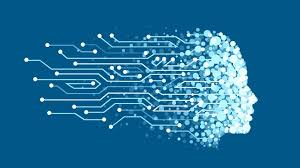Source: canada.businesschief.com
The security industry is no different, as emerging technologies are leveraged to enhance operations.
Much has been made of artificial intelligence (AI) and its potential, with companies of all kinds scrambling to implement it. Whilst the hype may presently outweigh the current benefits, AI in the security sector can be truly beneficial.
The buzz surrounding facial recognition, in particular, has dominated the public perception of AI in the security space. However, there are many applications of this tool which are already delivering benefits to businesses. Deep Learning (DL) is a subcategory of AI, which can empower surveillance technology to achieve unparalleled levels of accuracy. This, in turn, can make security professionals’ lives easier as they can focus on more pressing tasks, with full reassurance that DL is working in the background, improving protection and efficiency.
Deep Learning precision
In the past, surveillance applications that used video analytics to generate alerts often struggled to differentiate between a human intruder and other objects or wildlife, creating time-consuming false alarms.
However, DL can help overcome this hurdle by enabling users to pre-calibrate the system to detect real threats and ignore false ones. In the context of video analytics, the ‘learning’ aspect of DL refers to the way that a developer can train an algorithm to only pick up on specific objects and features, much in the same way that a human would visually disseminate a scene and distinguish between objects.
In a security application, the algorithm can be trained to recognise a person or a vehicle that could pose a threat. This level of sophistication in security tools means that the issue of false alerts is mitigated, and monitoring staff can focus their efforts on less tedious tasks, increasing their productivity and attention span, improving overall performance.
Ultimately, improved alert accuracy leads to a more secure perimeter. By detecting suspicious events in real-time, the technology enables staff to address incidents as they occur, reducing the need to analyse video footage in the wake of a security breach, when very little can be done.
Combining human and artificial intelligence
It’s true that AI and automation stand to revolutionise every sector. However, this is not to say that they are always a viable replacement for human intelligence.
AI and DL really excel in the automation of manual tasks and making improvements to operations, but the value of human input cannot be underestimated.
The DL component of security analytics is invaluable for overworked and understaffed monitoring teams – it can filter through hundreds of potential alerts and block those that aren’t useful. Staff are then left with only a handful of unusual situations to evaluate, which they are responsible for resolving. This is where human intelligence is still light years ahead of AI. The most successful businesses across the board are the ones who are able to combine the latest technologies with human intuition.


